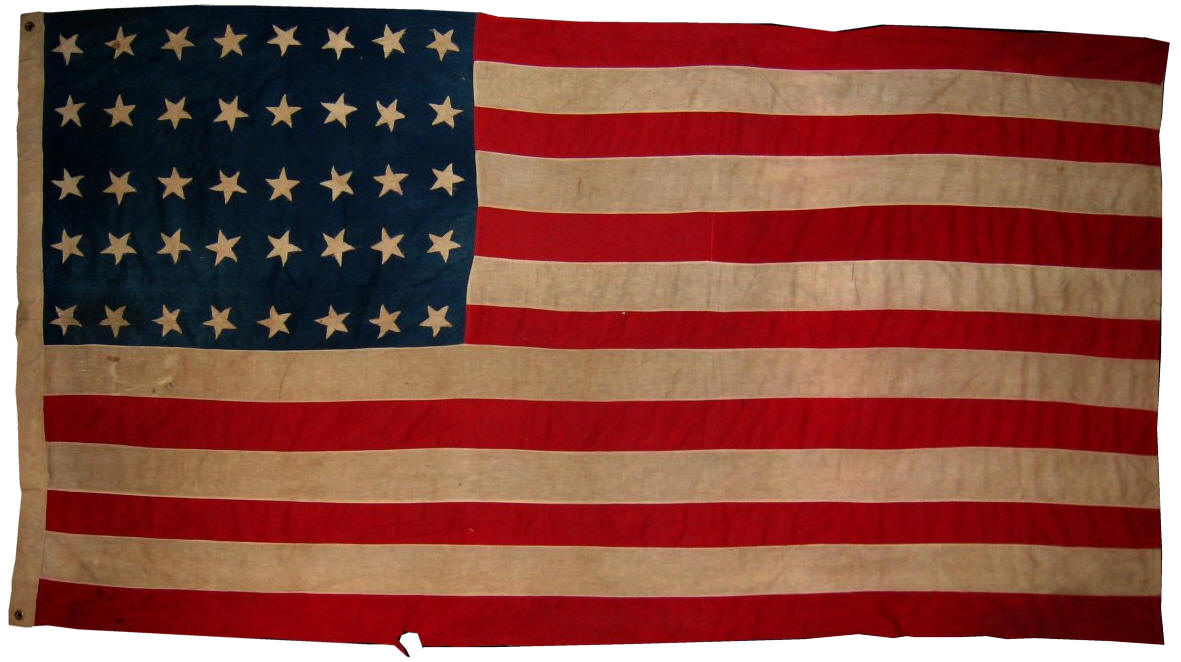
Flags are rare for a
variety of reasons, one of which is the duration that a
particular star count was valid. During the
late 1880s the United States grew from 38 states to 44
states in less than a year, adding five states: North
Dakota (39), South Dakota (40), Montana (41), Washington
(42), Idaho (43) and Wyoming (44). In anticipation
of the Dakotas entering the Union, flag makers printed relatively
large quantities of 39 star flags, but generally did not
expect the Dakotas to enter as two states. Before
they had an opportunity to react, however, Montana was
added just 6 days after the Dakotas, bringing the total
count to 41 states. Just three days after Montana,
Washington attained statehood and, for a period of 243 days,
we maintained 42 states. Thus the star counts of
40 and 41 are particularly rare.
Even rarity has
degrees, however, and this flag is a fine example of a
rarity among rarities. While all forty star flags
are rare, there exists two types of printed 40 star
flags: one a small type of parade flag printed on
cotton muslin, and another a larger press-dyed variation
with stars that tilt to the 11 o'clock position.
An example of each of these is in the Rare Flags
collection (IAS-00089 and IAS-00242). These two
versions of printed flags were manufactured, and must
have been produced in some quantity. Yet the
rarest variations of the 40 star flag are those few that
are homemade and of pieced-and-sewn construction, each
of which are unique and very rare. This beautiful flag, with
its rows of tumbling stars is one of just a handful--perhaps five or fewer--of homemade 40 star flags known.
The flag is made entirely of fine cotton and is a
beautiful example of the type. Its rich coloration and
folky variation, such as the varying widths of the
stripes and the
whimsical stars that rotate freely within their rows and
columns, makes this one of the finest and rarest flags
to represent the Dakotas. |

